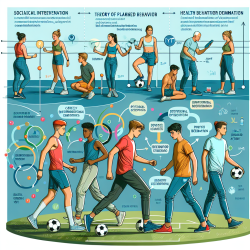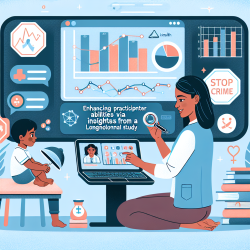As a practitioner working with adolescents, understanding the factors that influence their physical activity intentions is crucial. The research article "Predicting Adolescents’ Physical Activity Intentions: Testing an Integrated Social Cognition Model" provides valuable insights into how integrated social cognition models can be applied to enhance behavioral interventions. This blog post will explore key findings from the study and offer practical tips for practitioners looking to improve their skills.
The Role of Social Cognition Models
Social cognition models, such as the Theory of Planned Behavior (TPB), have been instrumental in understanding health behaviors. These models focus on belief-based constructs like attitudes, subjective norms, and perceived behavioral control, which are crucial in predicting intentions to engage in physical activity. However, traditional models often overlook non-conscious processes and socio-environmental factors that also play a significant role.
Key Findings from the Research
The study applied an integrated approach by incorporating additional constructs such as habit formation and socio-environmental influences. Here are some notable findings:
- Habit and Attitude: Habit strength and positive attitudes towards physical activity were strong predictors of adolescents' intentions to engage in physical activity.
- Perceived Behavioral Control: Adolescents' belief in their ability to perform physical activity significantly influenced their intentions.
- Socio-Environmental Factors: Peer support and access to exercise facilities were indirectly related to intentions through belief-based constructs.
Practical Tips for Practitioners
Here are some strategies practitioners can implement based on the research findings:
- Promote Positive Attitudes: Use persuasive communication techniques to highlight the benefits of physical activity and foster positive attitudes among adolescents.
- Enhance Perceived Control: Encourage self-efficacy by setting achievable goals and providing opportunities for skill development.
- Leverage Social Support: Facilitate group activities and peer interactions that promote a supportive environment for physical activity.
- Cultivate Habits: Help adolescents establish routines that incorporate regular physical activity into their daily lives.
Encouraging Further Research
The integration of social cognition models with additional constructs offers a comprehensive framework for understanding adolescent physical activity intentions. Practitioners are encouraged to explore these models further and consider how they can be adapted to different contexts and populations.
To read the original research paper, please follow this link: Predicting Adolescents’ Physical Activity Intentions: Testing an Integrated Social Cognition Model.










